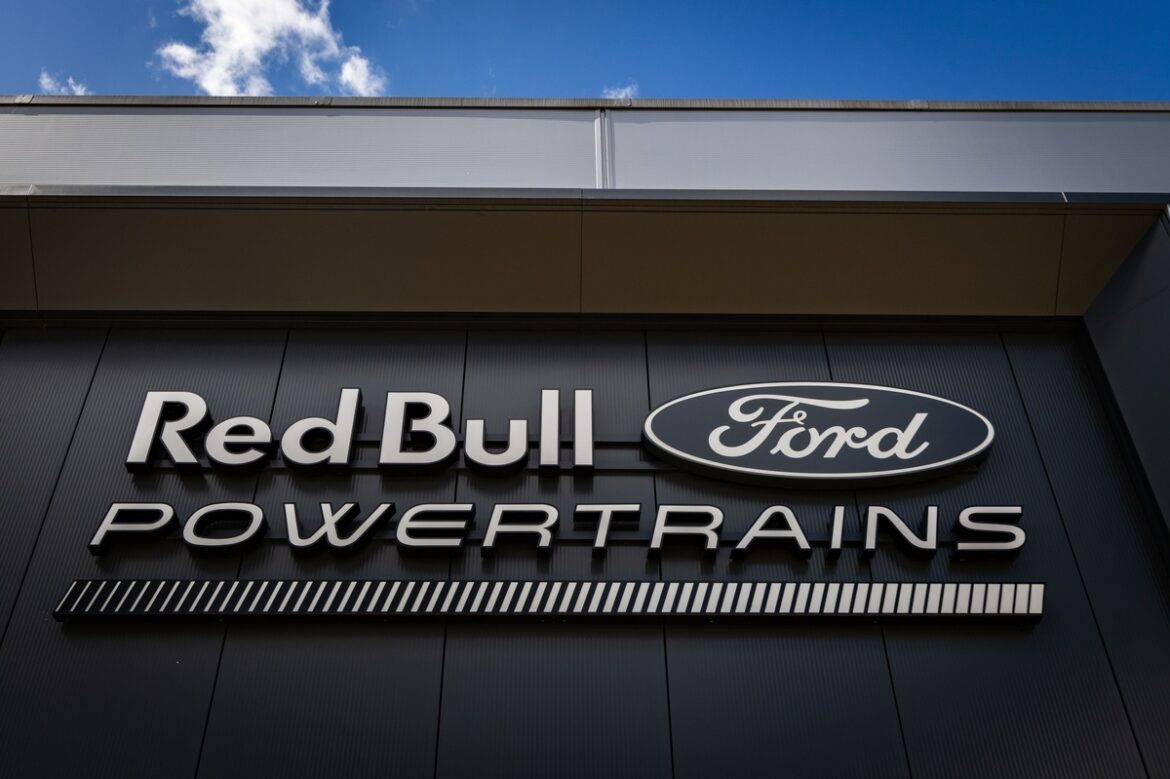The 2025 Formula 1 season is still in its early stages, but there’s already a significant amount of attention being directed toward the future, particularly concerning power units. The upcoming regulations, which emphasize increased electrical power, are set to impact nearly every aspect of the sport. After much speculation surrounding the potential return of naturally aspirated V10 engines, Formula 1 has reaffirmed its commitment to turbocharged engines that integrate enhanced electrical capabilities. This decision also includes the removal of the costly and problematic MGU-H, alongside a transition to internal combustion engines that utilize fully sustainable fuels.
Ford has been actively involved in this evolution, working closely with Red Bull Powertrains in a new facility located in Milton Keynes. Mark Rushbrook, the head of Ford Performance, highlighted the strengthening partnership, noting, “The collaboration is growing stronger each day.” He added that the groundwork for this partnership began even before the official contract was signed, indicating a proactive approach to development.
According to Rushbrook, Ford is contributing more to the Red Bull project than initially anticipated. “Our initial agreement primarily focused on the electrification aspect,” he explained. However, as they began utilizing advanced manufacturing capabilities and 3D printing technologies, the scope of their contribution expanded significantly. “We are now able to actively participate in the real-time development process,” he affirmed.
The production pace has been accelerated, with parts being manufactured and shipped daily from Dearborn to be tested in Milton Keynes. This operation is not just about meeting deadlines; it is also about ensuring quality and precision. Rushbrook emphasized that this collaboration is pushing Ford to explore new frontiers in both their processes and capabilities, even beyond what they have experienced in other motorsport disciplines.
The challenges presented by Formula 1 are distinct from those faced in other racing series. The technological demands of F1 require a longer development timeline to meet the high standards of competition. “When you consider the development of a GT3 car, that process takes less time compared to developing a power unit for F1,” Rushbrook pointed out. “For instance, our Mustang GT3 underwent a two-year development cycle, while we will be three and a half years into the development of our power unit by 2026.” This timeline emphasizes the intensity and rapid pace of the F1 development process.
The complexity of the project is further compounded by the fact that Red Bull Powertrains is a newcomer in this arena, and Ford lacks prior experience with hybrid F1 engines. Consequently, both partners have had to acquire specialized knowledge and expertise to bridge this gap. “We are building this project from the ground up, but we are doing so with a team that includes experienced professionals from Formula 1,” Rushbrook stated. “While there are new hires, everyone on our team shares a passion for racing, and they are adapting quickly to the fast-paced environment.”
The critical question remains: Can Red Bull and Ford remain competitive by 2026? Christian Horner, the team principal of Red Bull Racing, has recognized the magnitude of the challenge they face, particularly when competing against manufacturers with decades of experience in the sport. Rushbrook confirmed that while they are meeting many internal benchmarks, perfection is not always achievable. “We are hitting our power targets, but durability testing must also align with those objectives,” he said. “It’s a constant balance of power and durability, and we’re committed to reacting swiftly to any challenges we encounter along the way.”
The competitive landscape is constantly shifting, and understanding where rivals stand is often elusive. “It’s impossible to know exactly where we stand compared to other teams unless we are testing under identical conditions,” Rushbrook remarked. The rumors and discussions within the paddock suggest that competitors like Mercedes are confident in their capabilities. When asked about this sentiment, Rushbrook agreed, indicating that he and Horner share a similar perspective on the competition.
As Red Bull and Ford navigate this journey, they are focused on what gives them confidence in their ability to compete effectively in 2026. “Understanding the rules allows us to make informed decisions about what is achievable within those parameters,” Rushbrook explained. “We have a clear vision of what we believe is possible, but we acknowledge that other teams may have a different interpretation of the regulations.”
This uncertainty is what makes the 2026 season particularly intriguing, as even those directly involved in the development programs are facing the unknown. While internal goals can be achieved, the ultimate success will depend on how well they stack up against their competitors’ advancements. Until the cars take to the track in 2026, the landscape will remain uncertain, making it crucial for Red Bull and Ford to remain adaptable and responsive.
The evolution of power units in Formula 1 represents a significant shift in the sport’s approach to sustainability and technology. As the industry moves toward a more electrified future, the collaboration between Ford and Red Bull Powertrains is emblematic of the broader changes taking place. The commitment to advancing racing technology while prioritizing sustainability is a challenge that both organizations are embracing with vigor.
In summary, the partnership between Red Bull Powertrains and Ford is set against the backdrop of a rapidly changing Formula 1 landscape. The development of power units that meet the demands of the new regulations requires not only technical expertise but also a willingness to innovate and adapt. As the two companies continue to work together, their progress will be closely watched by fans and competitors alike. The 2026 season promises to be a pivotal moment in the history of Formula 1, and the efforts of Ford and Red Bull could well shape the future of the sport for years to come.
